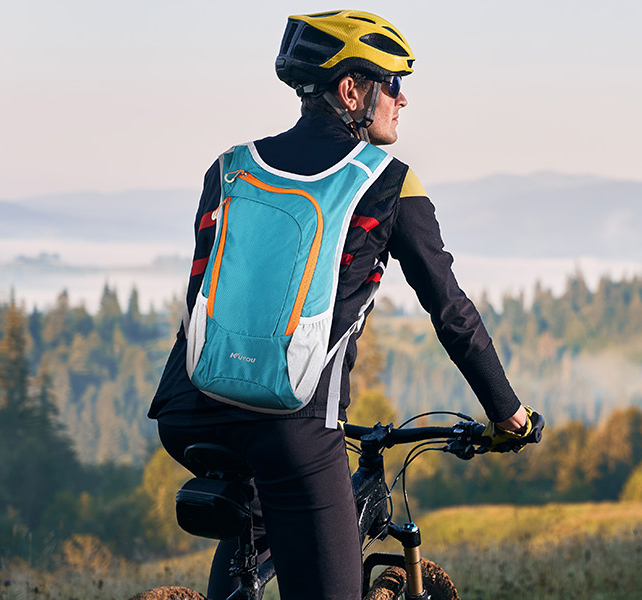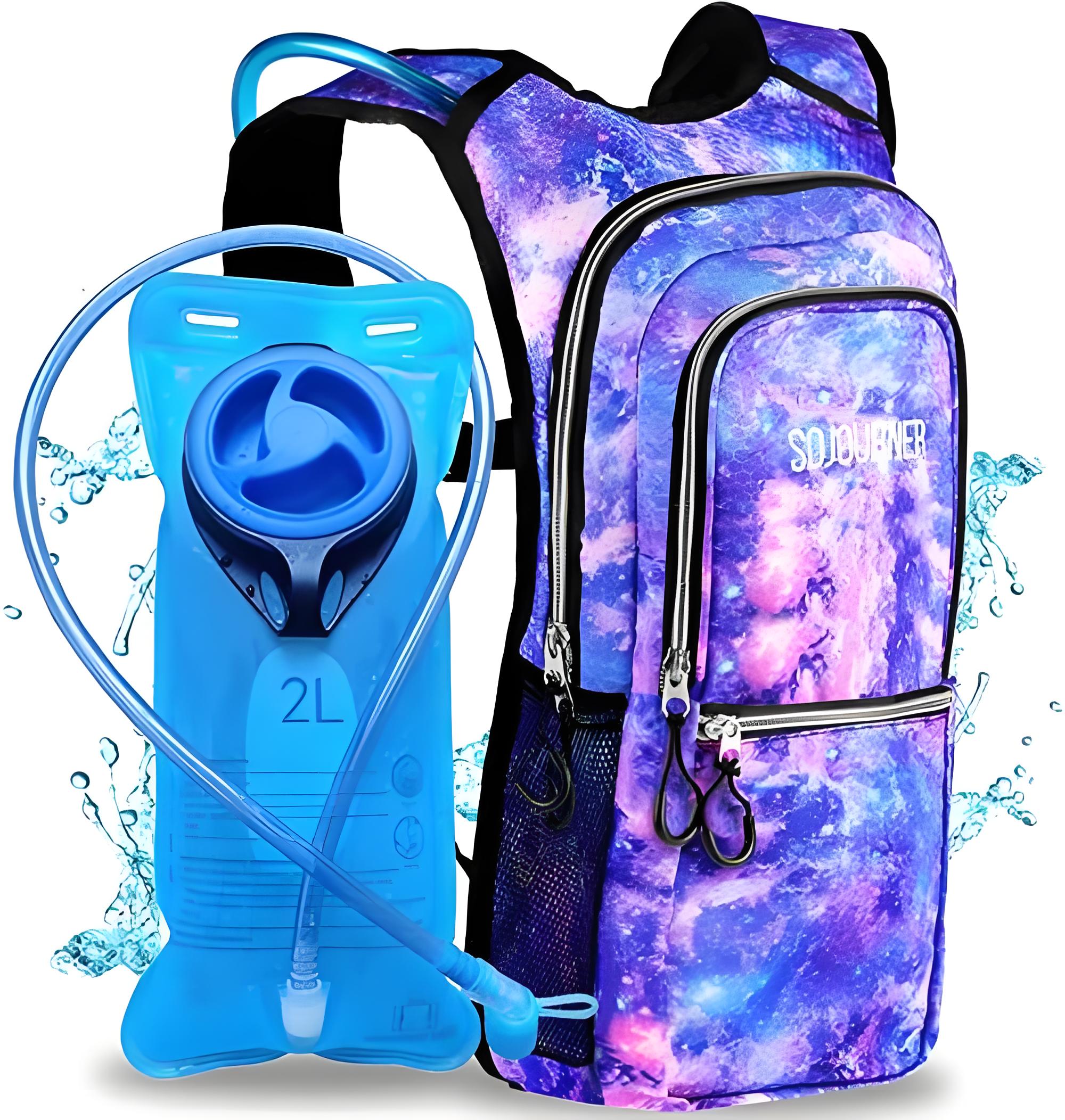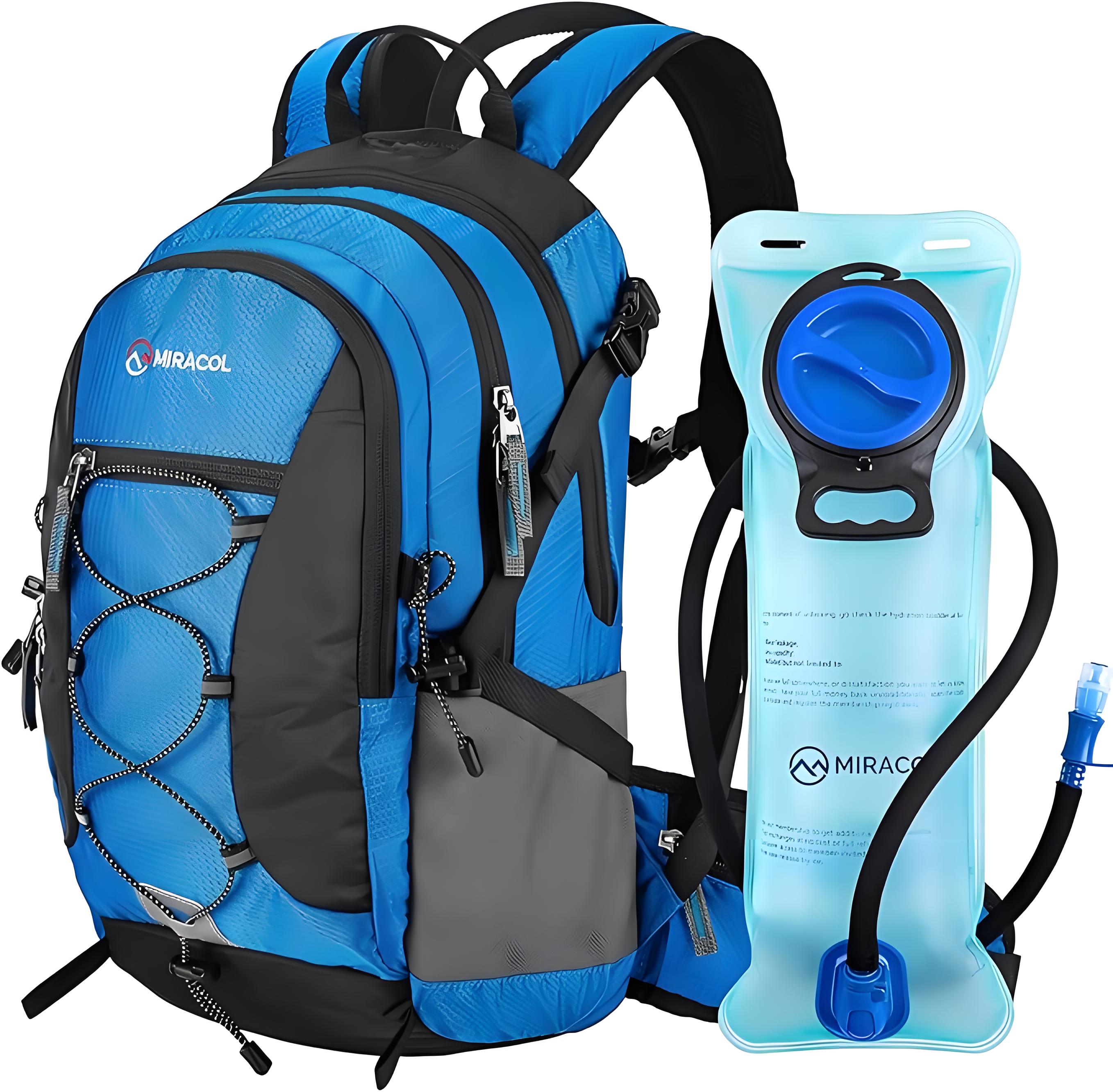Last summer, I went hiking with a few friends, carrying my trusty hydration backpack filled with ice-cold water. Sipping through the tube felt like discovering an oasis in the desert. But one day, while organizing my gear, a question popped into my mind: Will my hydration backpack get damaged if I don’t fill it with water for a long time? Outdoor gear isn’t cheap, and the thought of it getting ruined made me wince. The question seemed simple, but even the user manual didn’t provide a clear answer. As someone who’s been using hydration backpacks for years, I’d like to dive into this topic, share my experiences, and offer practical tips to keep your gear in top shape.
What Is a Hydration Backpack?
A hydration backpack is a specialized pack with an integrated water reservoir system, commonly used for activities like hiking, cycling, trail running, or even skiing. It typically consists of three main components: the backpack itself, the water reservoir (where the water is stored), and the drinking tube (for easy sipping on the go). The reservoir is often made of TPU (thermoplastic polyurethane) or food-grade silicone, materials chosen for their safety, durability, and ability to withstand pressure and temperature changes. The backpack part varies depending on the activity—some are lightweight for running, while others are larger for long-distance treks.
When I first used a hydration backpack, I was blown away by how convenient it was. No need to stop and fumble with a water bottle—just sip and keep moving. But over time, I noticed that many people, like me, have questions about how to store and maintain these backpacks, especially whether leaving them empty could cause damage.

Will It Get Damaged If Not Filled with Water?
Let’s get straight to the point: A hydration backpack won’t get damaged just because it’s not filled with water. The materials used, like TPU or silicone, are designed for long-term use and won’t degrade or crack from being stored dry. In fact, keeping water in the reservoir for extended periods can cause issues like bacterial growth or unpleasant odors.
That said, improper storage can affect the backpack’s lifespan. For example, a friend of mine once tossed his hydration backpack into a storage bin without much thought, and the drinking tube got bent out of shape. When he used it again, the mouthpiece was leaking. This taught me that how you store your hydration backpack matters more than whether it’s filled with water.
Here are a few factors that could potentially damage a hydration backpack:
Prolonged pressure: Squeezing the reservoir or tube under heavy objects can cause seams to crack or the mouthpiece to deform.
Improper cleaning: Storing it without cleaning can lead to mold or odors due to residual moisture.
Extreme environments: Storing in high heat or freezing conditions might accelerate material aging.
So, the bottom line is: not filling it with water won’t hurt it, but you need to store and maintain it properly.

How to Store a Hydration Backpack Properly
To keep your hydration backpack in great condition, proper storage is key. I’ve learned a few tricks over the years and put together a table to make it easy to follow.
Tips for Storing a Hydration Backpack:
Clean and dry thoroughly: After each use, clean the reservoir and tube to remove any moisture. Use warm water with a few drops of mild dish soap, rinse well, and let it air dry completely.
Avoid compression: Don’t fold the reservoir tightly or stack heavy items on top. Keep the tube in its natural shape to prevent damage.
Store in a cool, ventilated place: Avoid direct sunlight or hot environments, like the trunk of your car in summer.
Check periodically: Even if you’re not using it, inspect it every few months to ensure no mold or odors have developed.
| Storage Step | Correct Method | Incorrect Method | Consequences |
|---|---|---|---|
| Cleaning the reservoir | Use warm water and mild soap, dry thoroughly | Store without cleaning | Mold, odors, bacterial growth |
| Storing reservoir and tube | Keep unfolded in a breathable bag | Fold tightly or compress | Reservoir deformation, tube damage |
| Storage environment | Cool, ventilated area, avoid direct sun | Hot or humid conditions | Material aging, reduced sealing |
| Periodic checks | Inspect every 3-6 months | Ignore for years | Issues go unnoticed until unusable |
These steps might sound basic, but following them can make your hydration backpack last for years. I’ve got one that’s been going strong for five years, all thanks to consistent cleaning and careful storage.
How to Clean and Maintain a Hydration Backpack
I’ll admit, when I first started using a hydration backpack, I was pretty careless. After a trip, I’d just toss it in a closet without cleaning it. Months later, I pulled it out to find a funky smell and some weird residue in the tube. That was a wake-up call, and I’ve since made cleaning a non-negotiable part of my routine.
Steps to Clean a Hydration Backpack:
Empty the reservoir: Pour out any remaining water immediately after use to prevent stagnation.
Clean the interior: Use warm water (not hot, as it can damage the material) with a few drops of mild dish soap. Shake gently to cover the inner walls. A cleaning brush (often included with the backpack) can help scrub the inside.
Clean the tube: The drinking tube is a breeding ground for bacteria. Use a long, thin brush designed for tubes or a specialized cleaning solution.
Dry thoroughly: Open the reservoir and hang it in a well-ventilated area to air dry. Disassemble the tube if possible to ensure no moisture remains.
Optional disinfection: If you’re concerned about bacteria, soak the reservoir in a diluted food-grade white vinegar solution (1:10 ratio) for a few minutes, then rinse thoroughly.
Cleaning Frequency:
After each use: Do a quick clean and dry.
Before long-term storage: Perform a deep clean and ensure it’s completely dry.
If odors or stains appear: Clean immediately, and consider replacing the tube or reservoir if the issue persists.
Important: Don’t use a dishwasher to clean the reservoir, as the high heat and water pressure can damage seals or the material. Also, avoid bleach, as it may leave harmful residues.

Effects of Long-Term Non-Use and How to Handle It
If your hydration backpack is going to sit unused for a while—say, over the winter months—you might wonder if that’ll cause problems. Long-term non-use can lead to minor issues, but with the right precautions, you can avoid them.
Potential Issues:
Reduced sealing: Over time, seals may stiffen, potentially causing leaks.
Material aging: While TPU and silicone are durable, extreme conditions (like heat or humidity) can speed up wear.
Tube deformation: If the tube is stored bent or compressed, it might not function properly later.
Solutions:
Periodic water tests: Every 3-6 months, fill the reservoir with water to check for leaks or odors.
Store dry: Ensure the reservoir and tube are completely dry before storing in a breathable bag.
Avoid extreme conditions: Don’t leave the backpack in a damp basement or a hot garage.
Replace worn parts: If the mouthpiece or seals show signs of wear, replace them (many brands sell replacement parts).
I make it a habit to go through my gear every fall, checking my hydration backpack for any issues. Last year, I noticed the mouthpiece was a bit loose, so I swapped it out for a new one, and it’s been good as new ever since.

Common Misconceptions and Answers
Over the years, I’ve heard plenty of myths about hydration backpacks. Here are a few common questions I’ve come across:
Do I have to fill it with water every time? No, the design is flexible, and leaving it empty won’t harm it.
Can I store other liquids in it? Not recommended. While the materials are food-grade, sugary drinks like juice or milk can promote bacterial growth and are hard to clean out.
How long can a hydration backpack last? With proper care, a high-quality one can last 3-5 years or more.
If you’ve got other questions, feel free to ask—I’m happy to share what I’ve learned!
Conclusion
Thinking back to my first hike with a hydration backpack, the convenience of sipping water without breaking stride still feels like a game-changer. Your hydration backpack won’t get damaged if you don’t fill it with water, but proper cleaning and storage are crucial to keeping it in top condition. Whether you’re hitting the trails for a quick run or embarking on a multi-day trek, a well-maintained hydration backpack can make all the difference. I hope this guide answers your questions and gives you the confidence to care for your gear. Next time you’re gearing up for an adventure, take a moment to check your backpack, pack some water, and enjoy the journey!
Related Q&A
1. Can I fill a hydration backpack with hot water?
Not advisable. Hot water (above 40°C) can damage the reservoir material or seals, leading to leaks or material degradation. Stick to room-temperature or cool water.
2. What if my hydration backpack gets moldy?
Clean it with warm water and mild soap, then soak in a diluted white vinegar solution (1:10 ratio) for 10 minutes. Rinse thoroughly and dry. If the mold persists, consider replacing the reservoir.
3. Can I put carbonated drinks in a hydration backpack?
Avoid it. The pressure from carbonated drinks can cause leaks, and sugary residues can encourage bacterial growth.
4. How do I know if my hydration backpack needs replacing?
Look for signs like loose seals, a leaky mouthpiece, hardened material, or persistent odors that won’t go away after cleaning. Replace affected parts or the entire reservoir if needed.
5. What activities are hydration backpacks best for?
They’re ideal for hiking, cycling, trail running, skiing, or any activity where you need easy access to water. Choose a model based on capacity and features for your specific activity.